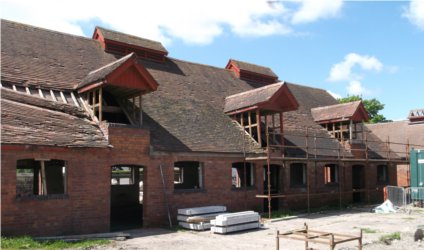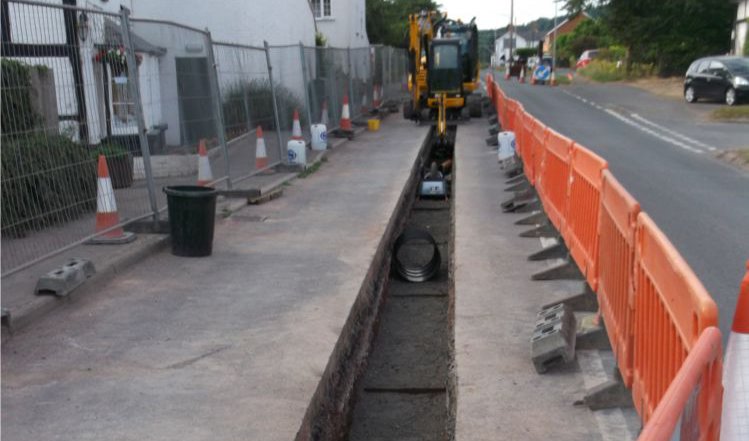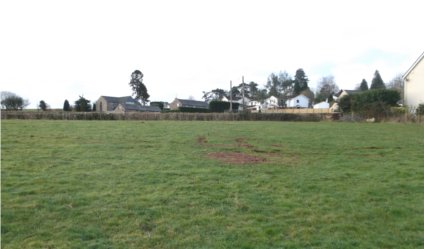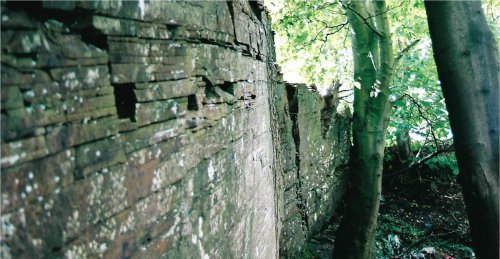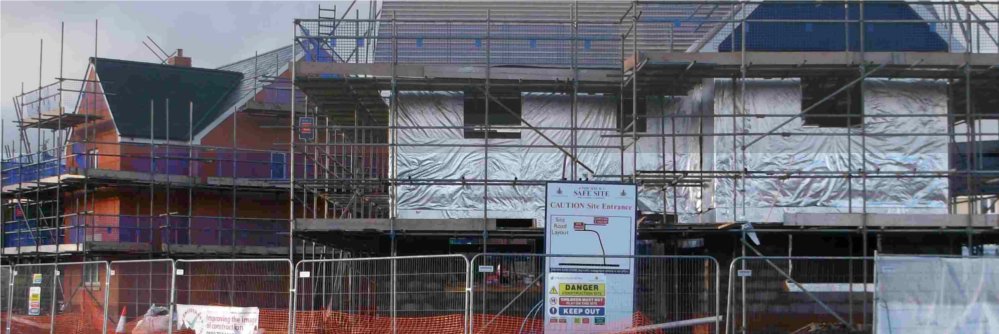
Drainage for Small Developments
Brief overview
Small developments (for example individual or small groups of houses or extensions to larger buildings) can present many problems as far as drainage is concerned. There follows a very brief overview of the design of the drainage for smaller developments in urban areas in England and Wales, see also Drainage for new developments in rural areas. Over recent years the framework for drainage design has become increasingly complex so the information below should not be regarded as a definitive guide and accurate under all circumstances.
Firstly it is suggested that drainage matters should be considered at an early stage in the overall design process. These can take a significant time to resolve not least due to the need to consult the county or unitary council and possibly the Environment Agency (EA) or Natural Resources Wales (NRW) together with the local water company. Delaying gaining the relevant drainage approvals can result in an almost complete new house being unable to be occupied for months because its drainage arrangements have not been finalised.
Various aspects of the design of the drainage for a site are considered in more detail below. For convenience this has been split into background matters and then separately the arrangements in England and Wales.
BACKGROUND MATTERS
Overall drainage design for a site
The design of drainage systems to serve a new development site can be relatively complex but there are some basic requirements. Firstly very briefly, the foul and surface water from the site should be drained separately and the site's foul drainage system should connect to the pubic sewerage system if reasonably possible (see 'Approved Document H' for further details). There are also various hierarchies for the destination of the surface water draining from a site and these vary depending on the site's size and as to if the site is in England or Wales.
Flooding
The need for a Flood Risk Assessment (for use in England) or a Flood Consequence Assessment (for use in Wales) should be considered based on the size and location of the site. Areas prone to flooding are shown on the EA or NRW flood maps.
Sewer adoption
Very briefly, sewer adoption provides a way for a developer to transfer the ongoing liability for the maintenance of sewers to the relevant water company. The water company, under section 104 of the Water Industry Act 1991 (WIA, 1991), agrees to accept this responsibility if the sewers are designed and constructed to a suitable standard. Section 102 of the same act provides a way for existing sewers to be adopted.
The mandatory adoption of some new drains and most new sewers is in operation in Wales, please see the following section for more details. This is a relatively costly and lengthy process in relation to a small development.
In England mandatory adoption of some new drains and most new sewers does not apply at present but may be implemented at some time in the future.
Please see Sewers for Adoption for further details.
Mandatory sewer adoption
Following on from the previous section, in Wales mandatory adoption applies to both new foul and surface water sewers draining to an existing public sewer but does not apply to Sustainable Drainage Systems (SUDS) which would require approval under Schedule 3 of the Flood and Water Management Act 2010. The overall situation is as set out below.
If the drain proposed to serve the development was wholly within a single property it would be designed in accordance with the Building Regulations.
If the proposed drain passed under the boundary of the property, then it would be subject to mandatory adoption downstream of the point where it passed into the third party's land and the Building Regulations upstream. A sewer serving two or more properties would also be the subject of mandatory adoption.
Mandatory adoption requires the developer to pay a number of additional costs. These include the legal costs associated with drawing up an agreement under section 104 of the WIA, 1991. The developer is also required to provide a non-performance bond which the water company can use to remedy matters if the work is not completed satisfactorily. The developer also has to pay for the water company to carry out a technical assessment and to supervise the work (starting at ₤456 at 2020 prices). At least two CCTV sewer surveys of the completed sewer or lateral drain are also required.
It should be noted that mandatory sewer adoption is applied to the area served by Dwr Cymru Welsh Water (DCWW) rather than Wales as a whole.
Sewer connections
Permission needs to be obtained to connect directly or indirectly to a public sewer (sections 106 and 106A of the WIA, 1991). Indirectly means when a connection is made to an existing private drain or sewer which itself already connects to a public sewer. In that case permission would also be required from the owner of the private drain or sewer.
The water company will probably insist on the developer employing an approved contractor to make the physical connection to the public sewer but on occasion they can insist on making the connection themselves. In the case of an indirect connection to a public sewer, the water company will probably not make the developer use an approved contractor but they may insist on inspecting the connection once made.
The water company will charge for all the approvals and inspections and once connected to the public sewer the development will attract an infrastructure charge and annual sewerage rates.
Crossing third party land
A proposed development may be close to a watercourse or sewer but if the required pipework has to cross another party's land, that could result in a problem with a 'ransom strip'. This is where the landowner demands a large payment for permission to cross the intervening land. This might be circumvented by requestioning a lateral drain or sewer from the water company under section 98 of the WIA, 1991 but this is likely to be slow and relatively costly. The water company will also require that the developer gains the consent of the riparian owner of any watercourse that the development is intended to directly discharge into.
Work in the highway will require the approval of the highway authority.
Building Regulations − General
The Building Regulations in the form of 'Approved Document H' cover those parts of drainage systems serving new developments not to be adopted. It should be noted that there are separate versions of the document for use in England and Wales.
Building Regulations − Surface water
According to the Building Regulations, ('Approved Document H'), the disposal of surface water from new buildings, in order of preference should be,
• to soakaways
• to a watercourse
• to a sewer
It will probably be necessary to carry out a soakaway test at the site either to determine the appropriate parameters to use in sizing the soakaway or to demonstrate to the building inspector that soakways are not feasible.
Sustainable Drainage Systems (SUDS)
The use of SUDS is likely to be required for the disposal of surface water from new developments. SUDS features aim to mimic natural processes of a catchment and so reduce the direct flow of surface water to watercourses and so in turn reduce the risk of flooding. SUDS measures include a variety of options, including soakaways, pervious pavements, rainwater harvesting systems and attenuation ponds. These either dispose of the surface water at source or reduce the peak run-off flow from a development so that it will not cause flooding from the watercourse further downstream.
Flood & Water Management Act, 2010
Schedule 3 of the Flood and Water Management Act, 2010 if enacted would ensure that SUDS would be applied to all new development sites of more than one property. Approving bodies would also be set up and these would approve, adopt and maintain the proposed SUDS features. Schedule 3 also provides for the use of non-performance bonds and fees for the approvals process. Schedule 3 has been implemented in Wales but not in England. Please see our SUDS page for more details.
It should be noted that Schedule 3 applies to Wales as a whole in contrast to mandatory adoption of sewers where that is not the case.
Surface water − other possibilities
It is possible to discharge surface water to a highway drain if there is one close by. A highway drain is a pipe which receives run-off from a highway maintainable at public expense and which 'belongs' to the highway and so is the responsibility of the highway authority. Permission to connect would be required from the highway authority but they are in no way obliged to agree to the proposal and would probably require payment.
ENGLAND
Foul drainage
In England there is no requirement for new foul drainage to be adopted unless required by the site's planning permission. For sewers to be adopted the 'Sewerage Sector Guidance' document would be applicable with 'Approved Document H' applying elsewhere.
Surface water
The use of SUDS in England is applied by way of the planning system for developments of ten or more properties with the Building Regulations applying below that figure. The 'Non-statutory technical standards for sustainable drainage systems' supplemented by 'The SUDS Manual' C753 would be applicable to the design and construction of the SUDS features for the larger sites. It should be noted that water companies can in some circumstances adopt some SUDS features, see the 'Sewerage Sector Guidance' document.
Any adoptable surface water sewers would be subject to the 'Sewerage Sector Guidance' document.
WALES
Foul water
Mandatory sewer adoption applies in Wales, see above, with the Building Regulations being used for the foul drainage within a single property.
The relevant design and construction standards are the 'Welsh Ministers' Standards for gravity foul sewers and lateral drains' with 'Sewer for Adoption' (7th Edition) applying to rising mains and pumping stations supplemented by DCWW's addendum for pumping stations. 'Approved Document H' applies to foul drains within a single property.
Surface water
Schedule 3 of the Flood and Water Management Act, 2010 is in operation in Wales which requires the use of SUDS on new development sites of more than one property or sites with a paved/roof area greater than 100m2. The SUDS Approving Bodies (SAB's) have also been established to oversee the process. The SUDS features need to be constructed to the requirements of the 'Statutory standards for sustainable drainage systems − designing, constructing, operating and maintaining surface water drainage systems'. Please see our SUDS page for more details.
Surface water sewers to be adopted would be designed and constructed to the requirements of 'Sewer for Adoption' (7th Edition).
The Building Regulations would apply to the surface water drainage for a single small new property.
Summary
Morton-Roberts has a strong capability in the design of all types of drainage for new developments, please contact us for further details.
Photograph: Houses under construction, Little Mill, Monmouthshire.

